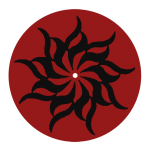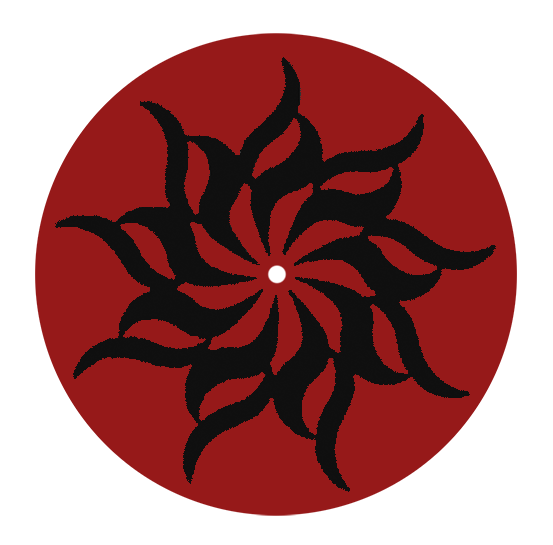Navakaraṇa Krama Maṇḍala
Trikoṇa sāraṇī
The Triangle series
Trikoṇa sāraṇī
The Triangle series on the first lunar day


Trikoṇa Sāraṇī
Trikoṇa sāraṇī or the Triangle series is practised on the first lunar day (prathama) of both brightening phase (śukla pakṣa) and fading phase (kṛṣṇa pakṣa) of the moon cycle. It is the ideal series for resuming practice after the day of physical rest which occurs on new moon (amāvāsya) and full-moon (paurṇamī). This series include the classics of haṭha-yoga combined with some very original poses and movements. It includes standing, kneelling, seating and supine poses. It is a flowing and dynamic sequence enriched which numerous active-cleanses (kriyā-śuddhi) These like hastrika and kapālabhātī harmoniously combined with the movements, poses and bandha like māha-bandha). It is very balanced and complete series but it is meant to enhanced in particularly the mobility and flexibility of the iliopsoas muscles.
Anatomical Focus
.The main anatomical focus is anterior stretch (agra-dairghya) and tejaskara (core-strength). Major anatomical focus: hip-flexor (psoas major and iliacus), rectus femoris. Antagonistic muscles: glutei, biceps femoris, gastrocnemius.
The Iliopsoas is the join of the psoas and the iliacus muscles. These two muscles which generate separately in the abdomen merge in the thighs to become the strongest flexor of the hip. They also work together to join into the femur at the lesser trochanter. The iliopsoas muscle is supplied by the lumbar spinal nerves L1-3 (psoas) and parts of the femoral nerve (iliacus).
Benefits
Due to the modern sedentary life-style it is very common to find individuals who suffer of poor mobility and/or weak of the iliopsoas muscles. Poor mobility and flexibility of riliopsoas muscles results not only in difficulty of movements but it also contributes tilting the hip and create stress and pain on the lower back (anterior tilt). On other head weakness of the iliopsoas muscles contributes to “flat back” posture and weakness of of legs and abdominal muscles (posterior tilt).
Trikoṇa sāraṇī is an excellent series for opening the whole body while also strengthening the iliopsoas muscles.. It can help in gaining correct posture for standing, walking, and running.Besiee the physical benefit it also boost the natural process of detoxification which help in regulating body metabolism.
Sequencing
Trikoṇa Sāraṇī is the first Series you learn in Module 1 of Navakaraṇa Vinyāsa Hṛdayam. This series includes 4 sequences:
– warm-up: Trikoṇa upakrama (Triangle pre-sequence)
– opening sequence: Trikoṇa krama (Triangle sequence)
– main sequence: Ūstra krama (Camel sequence)
– closing sequence: Hala Krama (Plough sequence)
Before you join the lead class learn the deconstruction of these sequences.
trikoṇa sāraṇī | |
upakrama pre-sequence 热身序列 | trikoṇa upakrama triangle pre-sequence 8’ 三角热身 8分钟 |
prāsthānika opening sequence 起始序列 | trikoṇa krama triangle sequence 20’ 三角序列 16分钟 5 bhāga-s of 30 breaths = 150 breaths = 16 minutes 5部分 x 30轮呼吸 = 150轮呼吸 约16分钟 |
ānuṣaṅgika concomitant sequence 伴随序列 | – – |
prādhānika main sequence 主体序列 | uṣṭra krama camel sequence 26’ 骆驼序列 26分钟 8 bhāga-s of 30 breaths = 240 breaths ⩳26minutes 8部分 x 30轮呼吸 = 240轮呼吸 约26分钟 |
ānuṣaṅgika concomitant sequence 伴随序列 | – – |
saṃprāpti closing sequence 结尾序列 | hala krama plough sequence 16’ 犁式序列 16分钟 7 bhāga-s of 21 breaths = 147 breaths ⩳16 minutes 7部分 x 21轮呼吸 = 147轮呼吸 约16分钟 |
series duration 时长 śavāsana-time not included 不含大休息时间 |
66 minutes |

